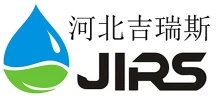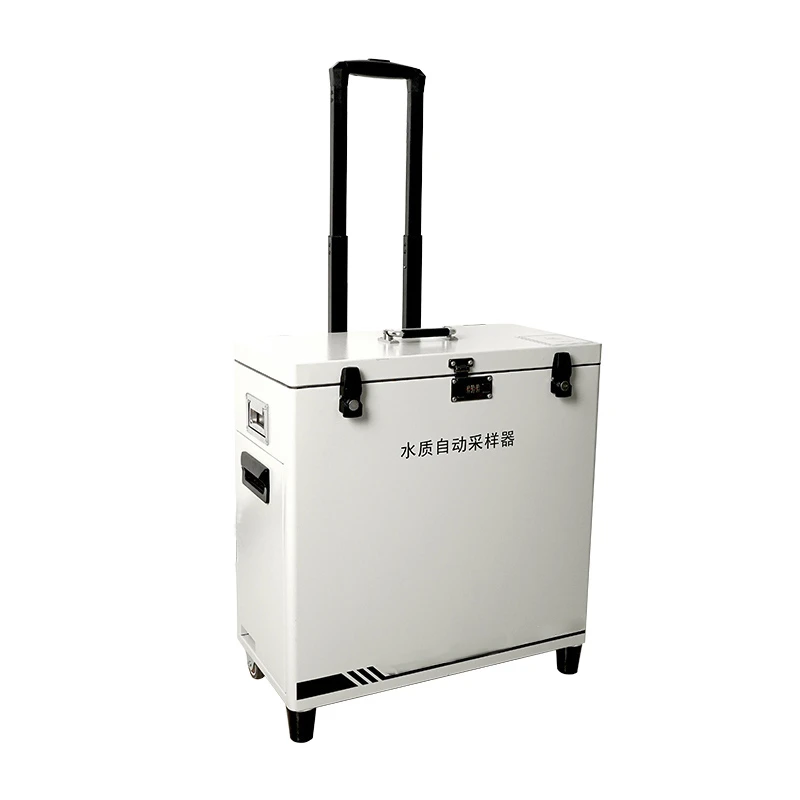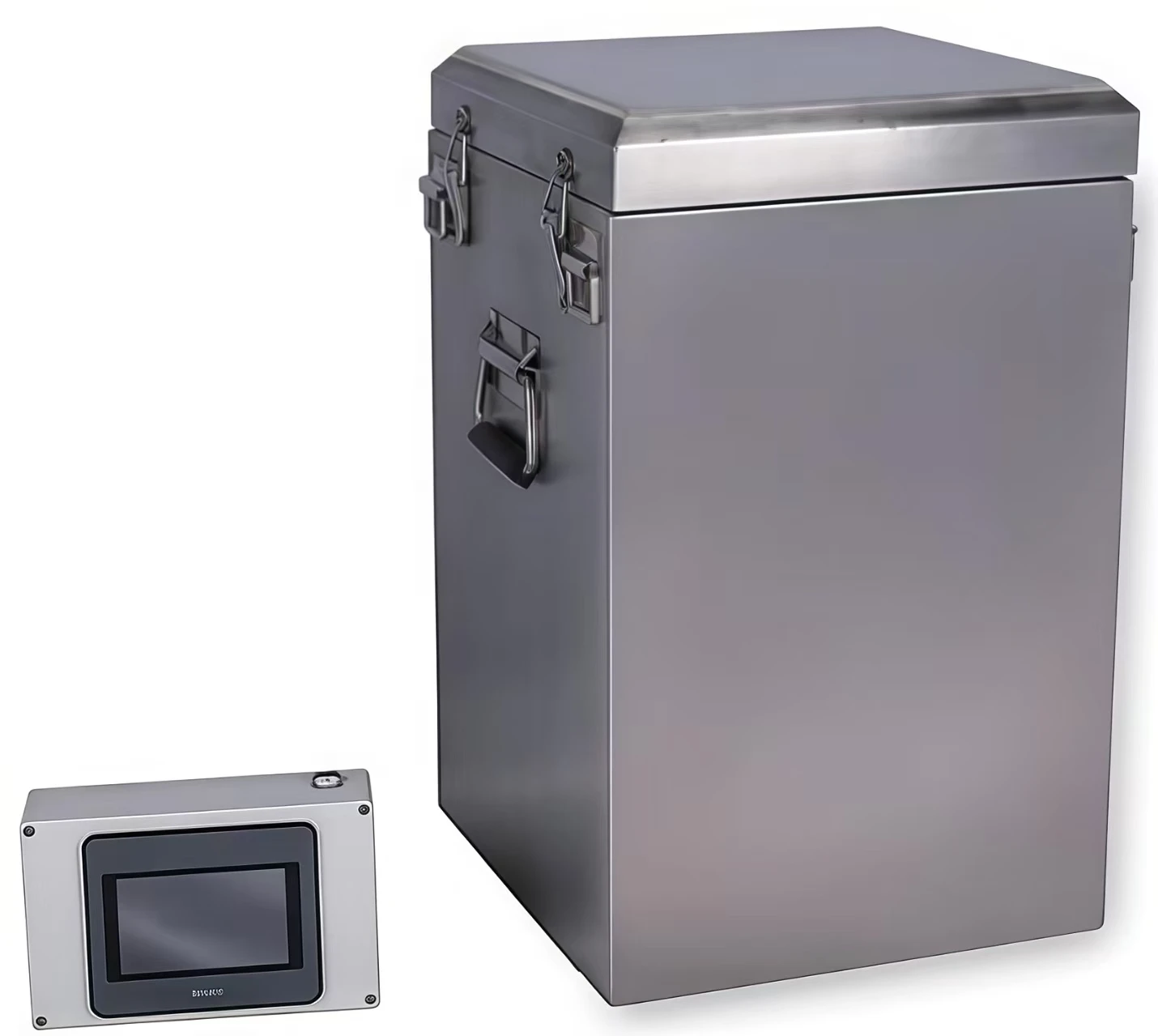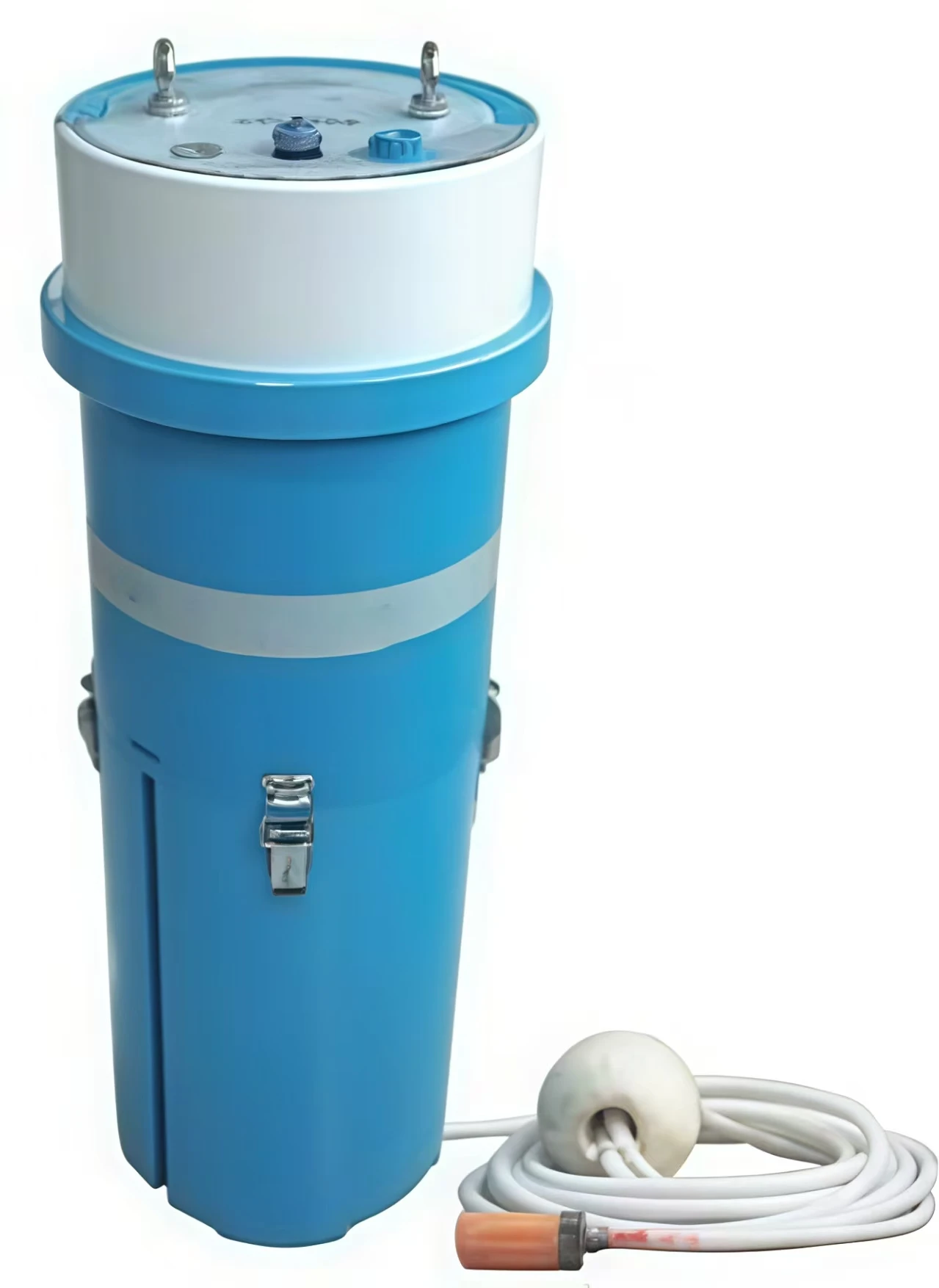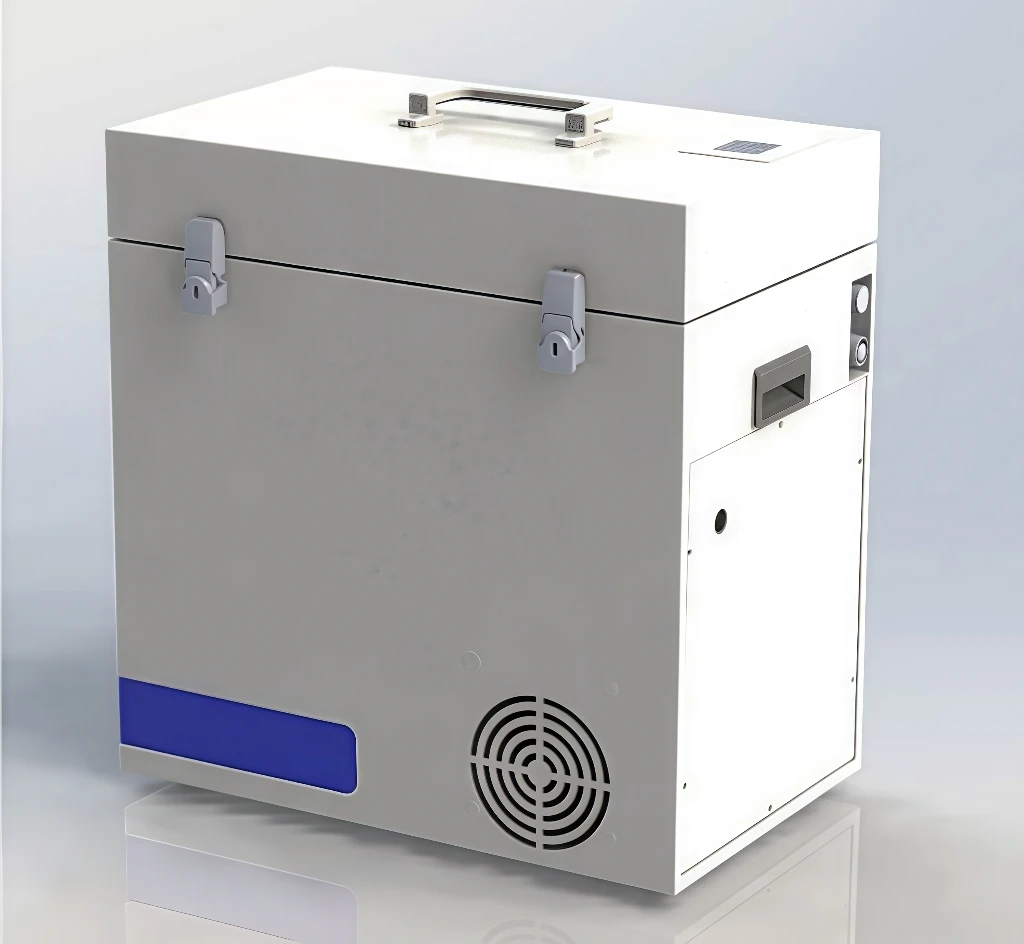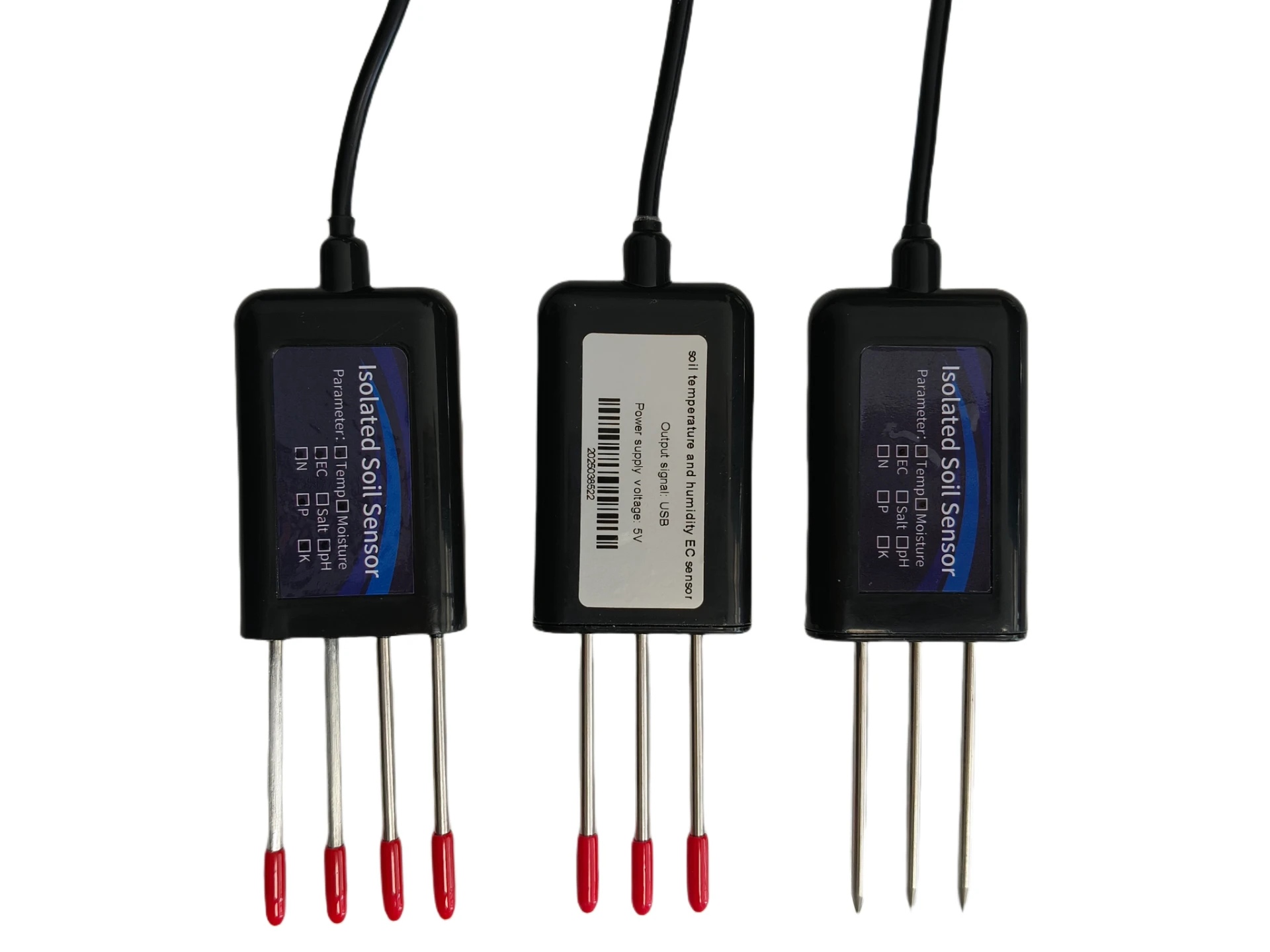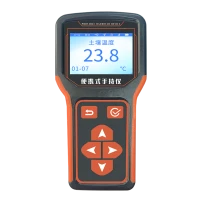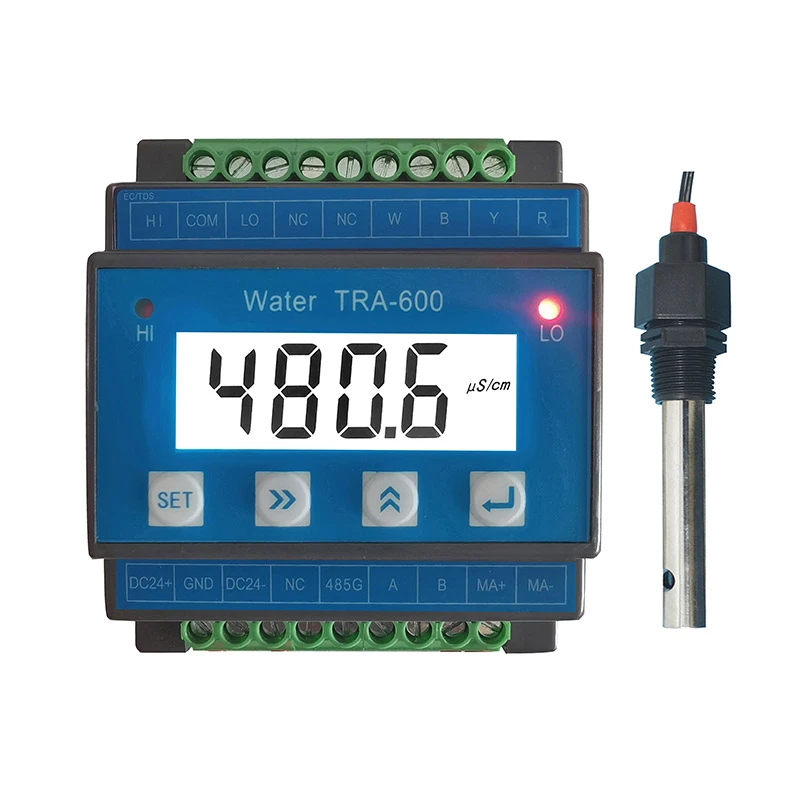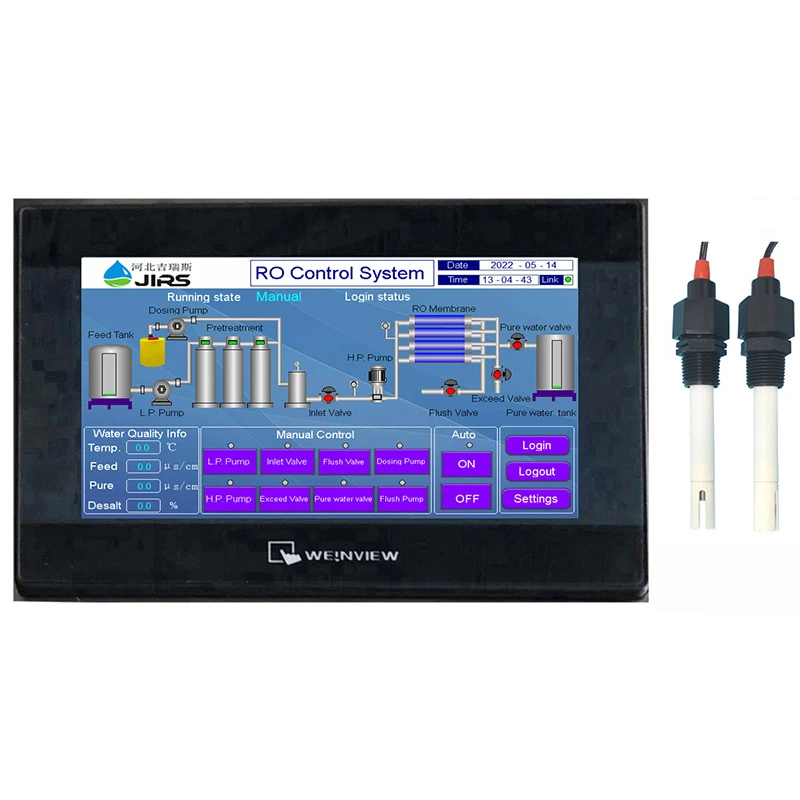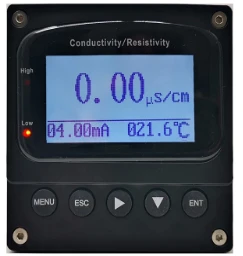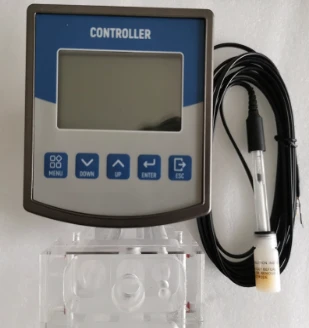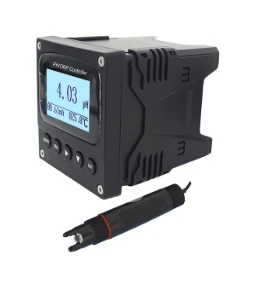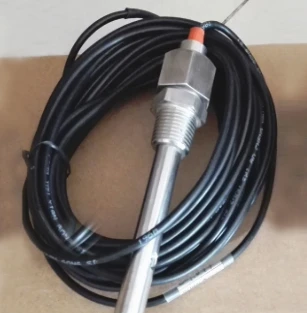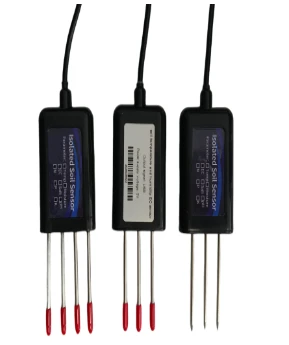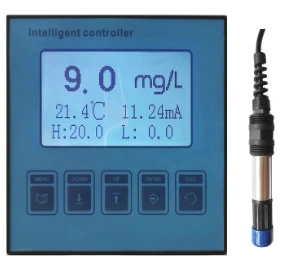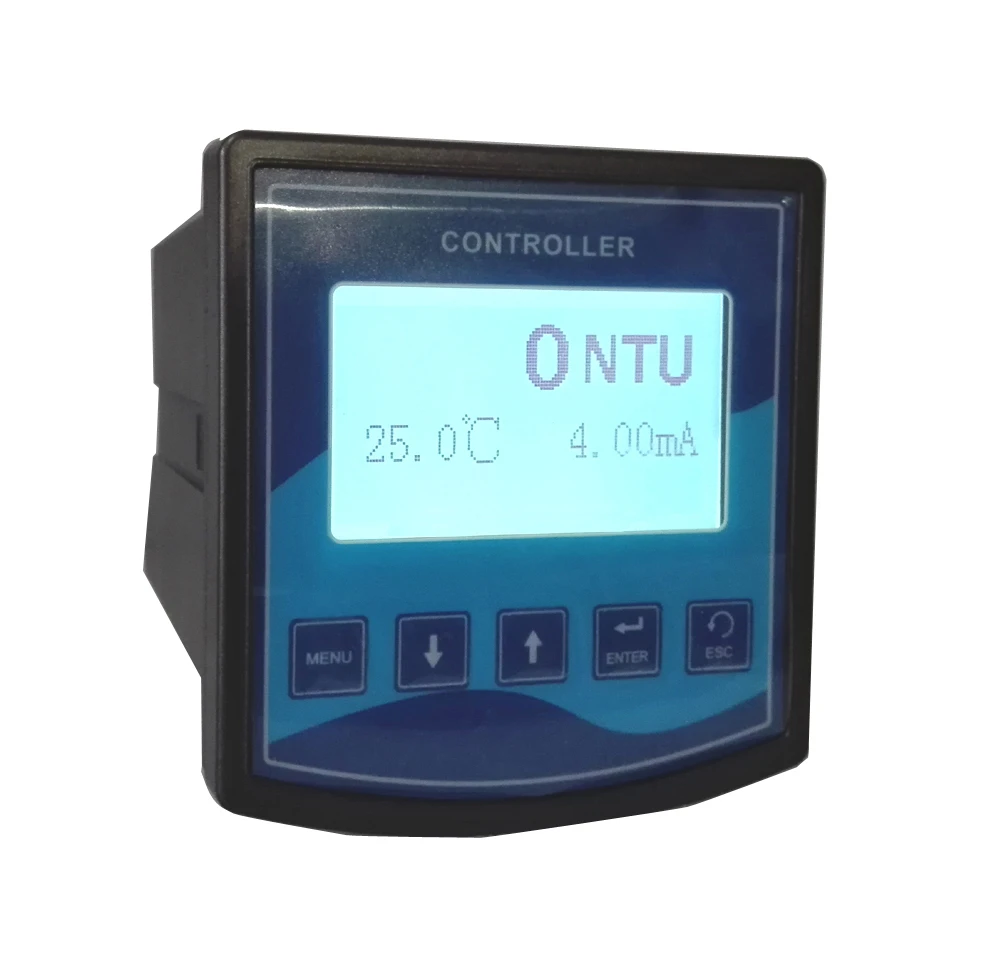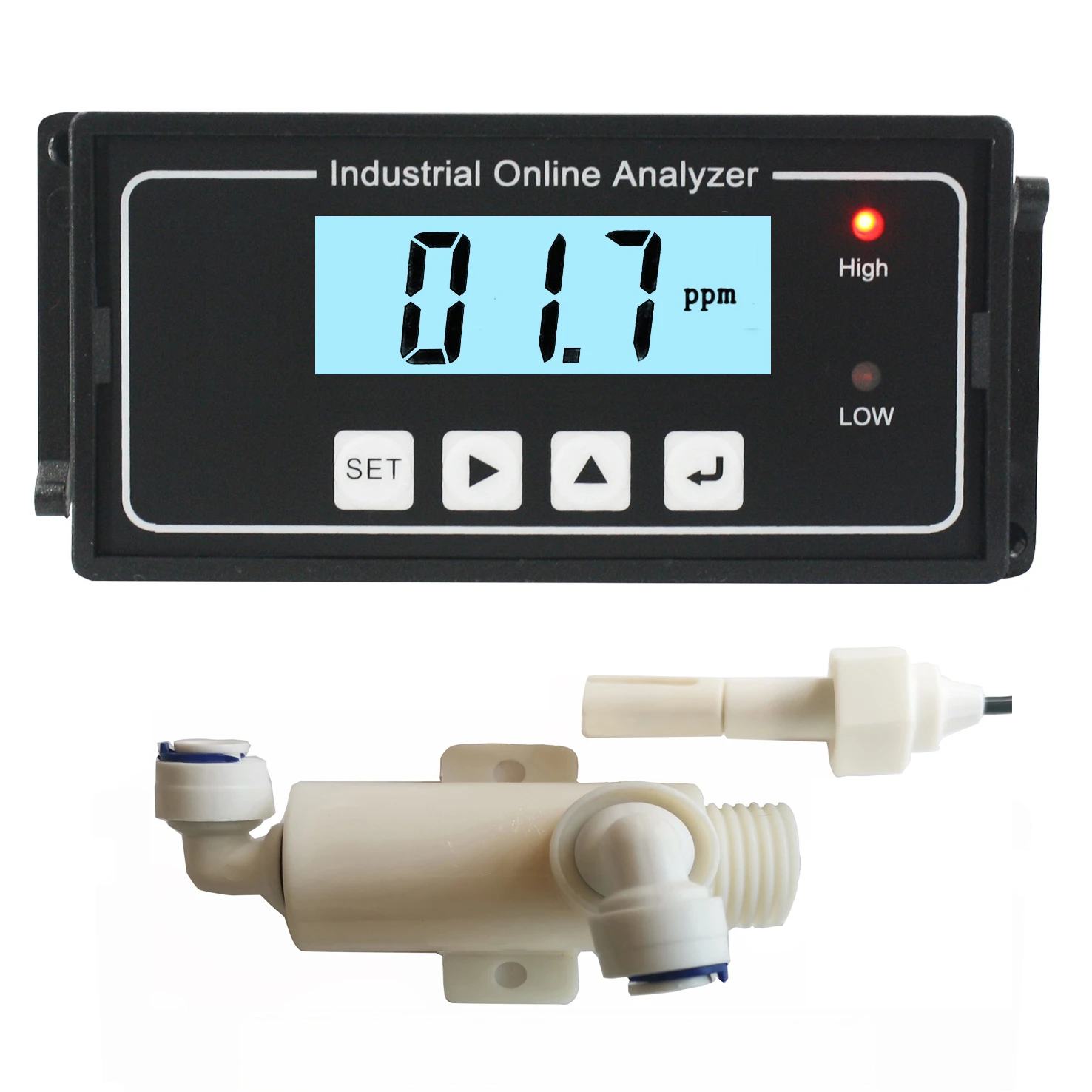ORP-TRA-600: Reliable ORP Transmitter for Accurate Process Control
Aug . 13, 2025
Understanding Current Industry Trends in ORP Measurement
The landscape of industrial process control is continuously evolving, with a growing emphasis on precision, efficiency, and environmental compliance. Oxidation-Reduction Potential (ORP) measurement plays a pivotal role in various sectors, from water treatment and chemical manufacturing to food and beverage production. Recent trends highlight a shift towards more intelligent, connected, and low-maintenance ORP sensing solutions. Industries are demanding higher accuracy in monitoring redox potential to optimize chemical dosing, prevent corrosion, ensure disinfection efficacy, and control critical reactions. This push is driven by stringent regulatory requirements, the need for cost reduction through optimized reagent usage, and the increasing complexity of industrial effluents. Advanced ORP transmitters, like the ORP-TRA-600, are at the forefront of this evolution, offering robust performance and seamless integration capabilities essential for modern industrial applications.
The demand for online, real-time ORP monitoring systems is particularly significant in applications where immediate data is crucial for process adjustment. This includes wastewater treatment plants requiring precise chlorine or ozone dosing for disinfection, and chemical processing facilities managing reduction reactions. Miniaturization, enhanced data analytics, and integration with Industrial Internet of Things (IIoT) platforms are becoming standard expectations. Furthermore, the focus on sensor longevity and reduced calibration frequency contributes to lower operational expenditure (OpEx), making advanced instruments highly attractive for long-term industrial deployment. The global market for ORP sensors is projected to grow steadily, fueled by these technological advancements and the escalating need for efficient process control in a resource-constrained world.
Detailed Technical Specifications: ORP-TRA-600
The ORP-TRA-600 online ORP transmitter is engineered for precision and reliability in demanding industrial environments. Its robust design and advanced features make it an ideal choice for continuous redox potential monitoring. Understanding its technical parameters is crucial for assessing its suitability for specific applications and ensuring optimal system integration. Below is a comprehensive table detailing the key specifications of this advanced instrument, providing insights into its performance capabilities and compatibility. These specifications are critical for engineers and procurement specialists evaluating instrumentation for new installations or system upgrades.
| Parameter | Specification for ORP-TRA-600 |
|---|---|
| Measurement Range | -1500 mV to +1500 mV |
| Accuracy | ± 1 mV or ± 0.1% F.S. (whichever is greater) |
| Resolution | 0.1 mV |
| Output Signal | Isolated 4-20mA DC (load ≤ 750Ω), RS485 (Modbus RTU protocol) |
| Power Supply | 24V DC ± 10%, 100mA max |
| Operating Temperature (Process) | 0°C to 60°C |
| Operating Temperature (Ambient) | -20°C to 70°C |
| Ingress Protection | IP65 (NEMA 4X equivalent) |
| Display | Large LCD with backlight for clear readings |
| Calibration | Manual and Automatic Calibration (e.g., two-point calibration) |
| Sensor Compatibility | Compatible with standard industrial ORP electrodes (BNC connector) |
| Mounting | Wall-mounted or Panel-mounted |
| Material (Housing) | Durable ABS/PC enclosure, chemical resistant |
The detailed specifications underscore the ORP-TRA-600's capability to deliver accurate and stable ORP measurements across a wide range of industrial conditions. Its versatile output options, including standard 4-20mA and RS485 Modbus, ensure seamless integration into existing Distributed Control Systems (DCS) or Supervisory Control and Data Acquisition (SCADA) networks. The IP65 rating signifies robust protection against dust and water jets, making it suitable for harsh industrial environments where exposure to elements is common. This level of environmental protection is vital for ensuring the longevity and consistent performance of the instrument, minimizing downtime and maintenance costs.
Application Scenarios and Industry Benefits
The versatility of the ORP-TRA-600 extends across a myriad of industrial applications where precise redox potential monitoring is critical. In wastewater treatment, it's indispensable for controlling chlorination/dechlorination processes, ensuring optimal disinfection while preventing over-dosing that can lead to environmental harm or increased chemical costs. For industrial cooling towers, ORP monitoring helps manage biocide addition and corrosion inhibition, significantly extending equipment lifespan and reducing maintenance. In the chemical industry, this transmitter is crucial for reaction control, ensuring processes like cyanide oxidation or chromate reduction proceed as planned, maintaining product quality and safety.
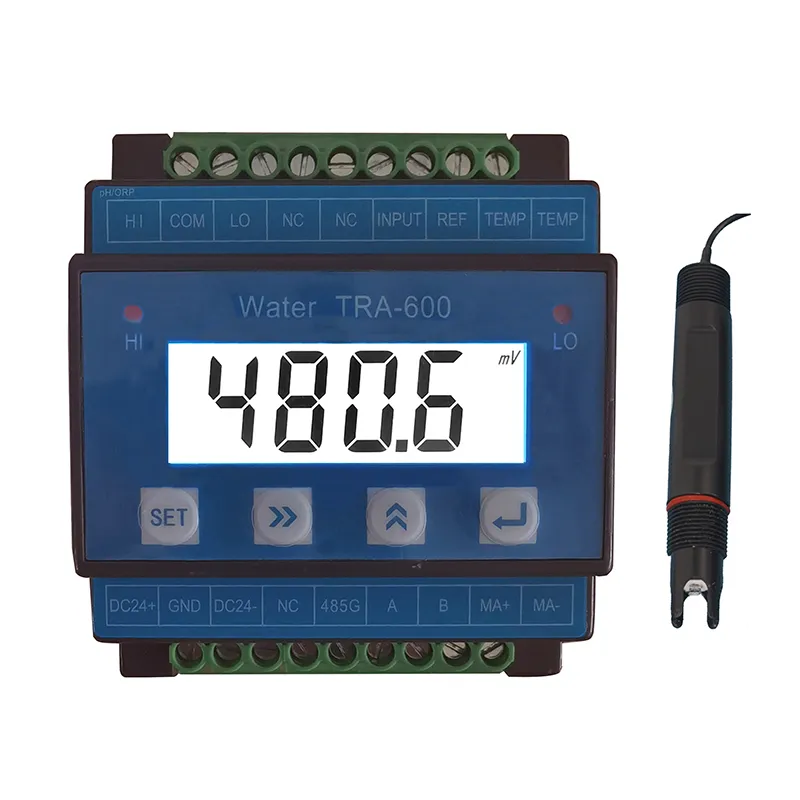
Beyond these, the food and beverage sector utilizes ORP for sanitization processes and fermentation control, ensuring product consistency and preventing spoilage. In mining, it assists in controlling various leaching and purification steps. Each of these sectors benefits from the unit's ability to provide real-time data, enabling rapid process adjustments and proactive problem-solving. This not only leads to significant cost savings through optimized chemical usage but also enhances operational safety and compliance with environmental regulations. The precision offered by this online transmitter ensures that processes remain within optimal ORP ranges, preventing costly errors and improving overall system efficiency.
Core Technical Advantages of the ORP-TRA-600
The ORP-TRA-600 distinguishes itself through a suite of technical advantages designed to meet the rigorous demands of industrial environments. Its high-precision analog-to-digital conversion ensures accurate measurement of redox potential, critical for sensitive processes. The integrated temperature compensation automatically adjusts readings for varying process temperatures, preventing inaccuracies that can arise from temperature-induced shifts in ORP values. This automatic compensation feature significantly enhances the reliability of the data, reducing the need for manual adjustments and improving overall system stability. Furthermore, its robust electrical isolation minimizes interference from external electrical noise, ensuring stable and clean signal transmission even in electrically noisy industrial settings.
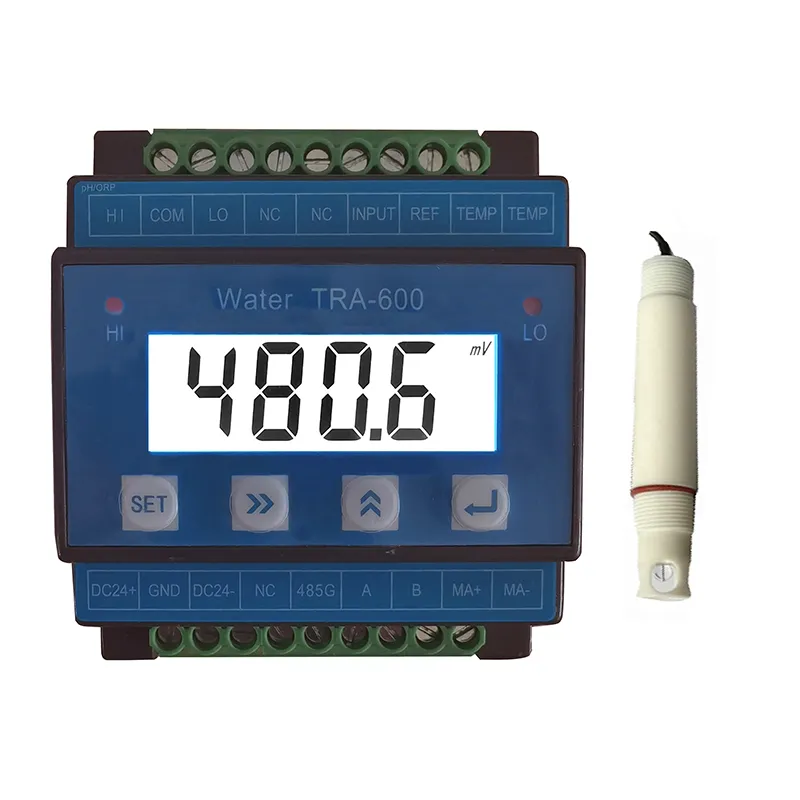
The transmitter's user-friendly interface, featuring a large LCD display, provides clear and intuitive access to real-time data and configuration settings, simplifying operation and maintenance. Its compatibility with standard industrial ORP electrodes, typically using a BNC connector, offers flexibility in sensor selection and reduces proprietary hardware constraints. The multiple output options (4-20mA, RS485 Modbus) facilitate seamless integration into diverse control systems, providing actionable data for automation and optimization. These combined features contribute to enhanced operational efficiency, reduced chemical consumption, improved product quality, and significantly lower total cost of ownership over the instrument's lifespan. The durability and long service life of this ORP transmitter further cement its value proposition in demanding industrial applications.
Manufacturer Comparison and Value Proposition
In a competitive market, selecting the right ORP transmitter involves careful consideration of performance, cost, and long-term support. While many manufacturers offer ORP solutions, the ORP-TRA-600 stands out due to its optimal balance of advanced features and cost-effectiveness. Traditional high-end industrial transmitters often come with prohibitive price tags, while budget-friendly options frequently compromise on accuracy, durability, or integration capabilities. The unit bridges this gap, providing industrial-grade precision and robustness at a more accessible price point, making it an excellent investment for both large-scale industrial plants and smaller operations.
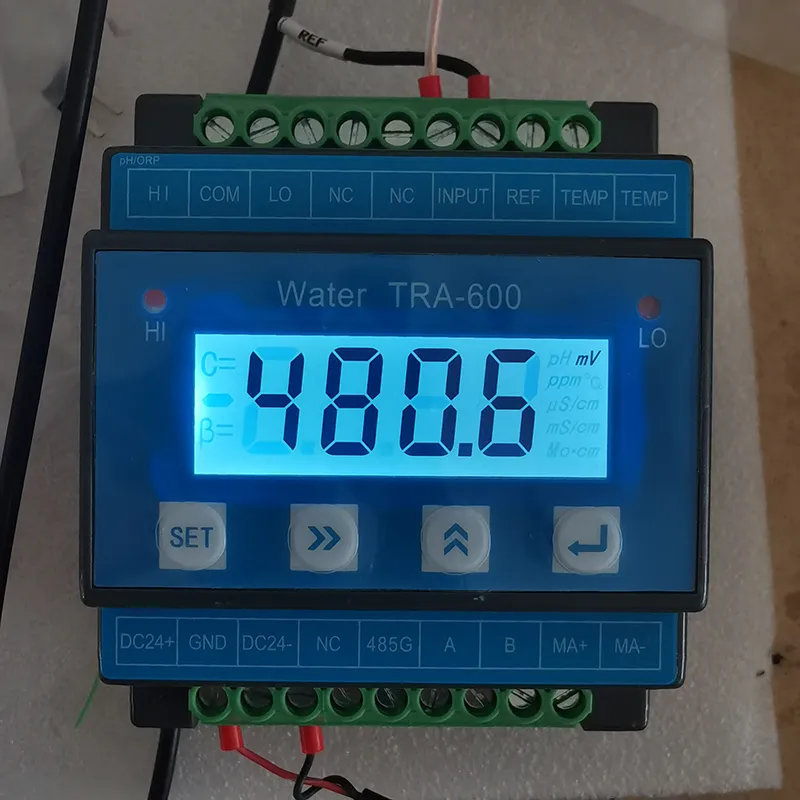
Key differentiators for the ORP-TRA-600 include its superior anti-interference capabilities, ensuring stable readings in electromagnetically noisy environments, a common challenge in heavy industries. Its intuitive user interface reduces training time and operational complexity, a significant advantage over systems requiring specialized programming knowledge. Furthermore, the commitment to readily available customer support and comprehensive technical documentation minimizes potential downtime and simplifies troubleshooting. This blend of technical excellence, user-centric design, and dedicated support positions this ORP transmitter as a compelling choice for businesses prioritizing long-term reliability and operational efficiency over fleeting cost savings from inferior alternatives.
Customization Solutions and Integration
Recognizing that no two industrial processes are identical, the ORP-TRA-600 offers flexibility for customization and seamless integration into diverse existing infrastructures. While the standard unit meets a wide range of needs, specific applications may require tailored solutions. This could involve modifications to output protocols for integration with legacy systems, specialized housing materials for extremely corrosive environments, or bespoke sensor cable lengths to accommodate unique installation constraints. Our engineering team works closely with clients to understand their precise requirements, offering custom firmware configurations or hardware adaptations to ensure perfect compatibility and optimal performance.
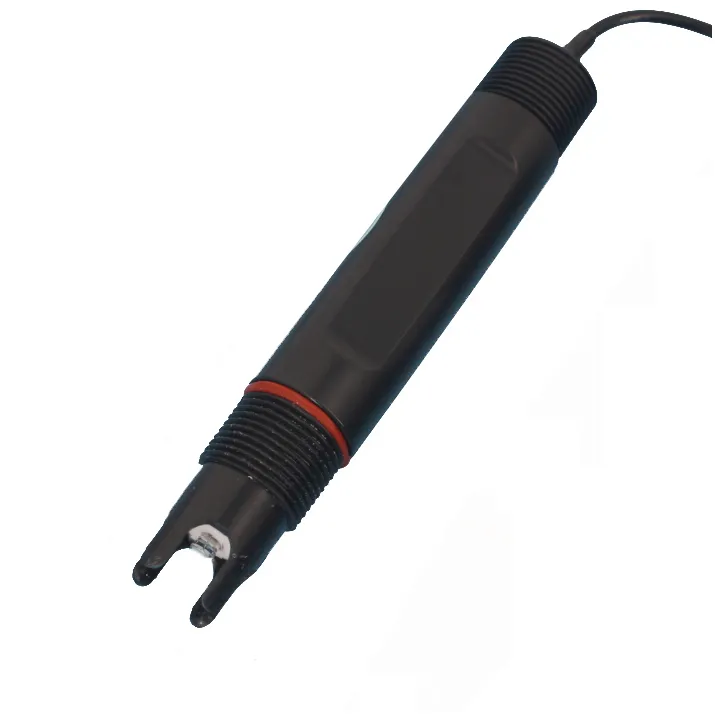
The open Modbus RTU protocol via RS485 allows for straightforward integration with virtually any PLC, DCS, or SCADA system, enabling real-time data acquisition and control. For advanced analytics or IIoT initiatives, the data from the ORP-TRA-600 can be easily fed into cloud-based platforms for trend analysis, predictive maintenance, and remote monitoring. This level of adaptability ensures that the unit can be a cornerstone of both current and future process automation strategies, providing scalable solutions that evolve with your operational needs. Our commitment to customized solutions extends to providing detailed integration guides and direct technical support throughout the implementation phase.
Illustrative Application Cases with the ORP-TRA-600
The practical effectiveness of the ORP-TRA-600 is best demonstrated through real-world applications. Consider a municipal wastewater treatment plant facing challenges with inconsistent disinfection. By integrating this transmitter, they achieved precise, real-time ORP monitoring of their chlorinated effluent. This allowed for immediate adjustments to chlorine dosing, ensuring consistent disinfection efficacy (meeting a target ORP of 650-750 mV) while reducing chlorine consumption by an estimated 15%, leading to significant chemical cost savings and improved regulatory compliance. The system's stability minimized false alarms and provided operators with reliable data for decision-making.
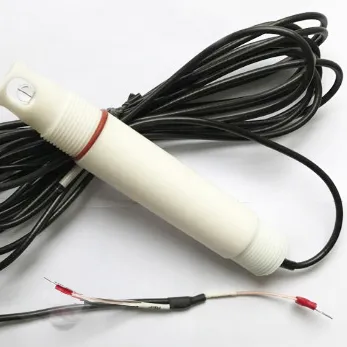
Another example is a large-scale electroplating facility where hexavalent chromium reduction is a critical safety and environmental step. Manual ORP measurements were time-consuming and prone to errors. Implementing the ORP-TRA-600 provided continuous monitoring, ensuring the reduction reaction completed effectively (typically targeting ORP below 300 mV) before subsequent treatment. This led to a 20% reduction in reducing agent usage and significantly minimized the risk of discharging untreated hexavalent chromium. These cases highlight the tangible benefits—from cost savings and improved safety to enhanced environmental performance—that businesses can realize by integrating the advanced monitoring capabilities of this instrument into their critical processes.
The Manufacturing Process and Quality Assurance of ORP-TRA-600
The production of the ORP-TRA-600 online ORP transmitter adheres to stringent manufacturing processes and quality control standards, ensuring its exceptional performance and longevity. The process begins with the selection of premium materials, including high-grade ABS/PC plastics for the robust housing and meticulously sourced electronic components that meet industrial reliability specifications. Key stages involve precision injection molding for the enclosure, ensuring an IP65 ingress protection rating crucial for harsh environments like those found in petrochemical or metallurgical industries. Internal circuit boards undergo automated surface-mount technology (SMT) assembly, followed by rigorous visual inspections and electrical testing to guarantee flawless operation.
Each unit of the ORP-TRA-600 is subjected to a comprehensive series of quality checks. This includes functional testing across its full measurement range (-1500mV to +1500mV) using certified ORP buffer solutions to verify accuracy (± 1mV). Environmental stress tests, such as thermal cycling (0°C to 60°C) and vibration tests, simulate real-world operational conditions to ensure durability and stability. EMC/EMI compliance testing is performed to confirm its anti-interference capabilities, vital for industrial settings. Adherence to international standards like ISO 9001 for quality management systems and ANSI standards for specific component compatibility is central to our manufacturing philosophy, extending product lifespan and ensuring reliable performance in demanding applications such as power generation or potable water treatment where precision and long-term stability are paramount. This meticulous process not only ensures product excellence but also contributes to energy efficiency by enabling precise control and reducing chemical waste, aligning with modern industrial sustainability goals.
Manufacturing Process Flow (Simplified Diagram Concept)
- Material Procurement: Sourcing high-grade ABS/PC, electronic components (chips, resistors, capacitors), display units, and connectors from certified suppliers.
- Housing Production: Precision injection molding for the IP65-rated enclosure, ensuring structural integrity and environmental sealing.
- PCB Assembly (SMT): Automated mounting of electronic components onto printed circuit boards, followed by reflow soldering.
- Module Integration: Assembly of LCD display, user interface buttons, and communication modules onto the main PCB.
- Wiring & Connection: Secure connection of internal wiring and terminal blocks, ensuring robust electrical integrity.
- Initial Functional Testing: Power-up tests, display functionality checks, and basic I/O verification.
- Calibration & Accuracy Verification: Calibration against certified ORP buffer solutions across the full range, fine-tuning for optimal accuracy.
- Environmental & Durability Testing: Temperature cycling, vibration tests, and EMC/EMI testing to ensure resilience in industrial conditions.
- Final Assembly & Sealing: Secure fastening of housing components and final sealing to maintain IP rating.
- Final Quality Inspection & Packaging: Comprehensive visual inspection, final performance validation, and preparation for shipment.
This simplified flow highlights the meticulous steps taken to ensure every ORP-TRA-600 unit meets rigorous quality and performance benchmarks.
Frequently Asked Questions (FAQ) about ORP-TRA-600
Q1: What is ORP and why is it important to measure with the ORP-TRA-600?
ORP, or Oxidation-Reduction Potential, is a measurement of a water's ability to cleanse itself or break down contaminants. It quantifies the oxidizing or reducing power of a solution in millivolts (mV). A higher ORP value indicates greater oxidizing power, which is crucial for effective disinfection (e.g., chlorination, ozonation) and contaminant breakdown. The ORP-TRA-600 provides real-time, accurate ORP data, enabling precise control over chemical dosing, ensuring process efficiency, and preventing over or under-treatment, which can save costs and ensure compliance.
Q2: How often does the ORP-TRA-600 need calibration?
The calibration frequency for the ORP-TRA-600 depends on the specific application and the characteristics of the process fluid. In clean water applications, calibration might be needed every few weeks to months. In more aggressive or fouling environments (e.g., wastewater, high-solids processes), more frequent calibration, perhaps weekly or bi-weekly, might be necessary to maintain optimal accuracy. The ORP-TRA-600 features both manual and automatic calibration modes to simplify this process, and we recommend establishing a calibration schedule based on observed sensor drift and process criticality.
Q3: Can the ORP-TRA-600 integrate with existing control systems?
Absolutely. The ORP-TRA-600 is designed for seamless integration. It provides standard industrial outputs including an isolated 4-20mA DC current output, compatible with most PLCs, DCS, and analog input modules. Additionally, it features an RS485 interface with Modbus RTU protocol, allowing for digital communication with a wide array of SCADA systems and industrial networks. This dual-output capability ensures maximum flexibility for integration into almost any existing or new control architecture, making the ORP-TRA-600 a versatile choice for modern industrial automation.
Delivery Cycle, Quality Assurance, and Customer Support
Understanding the logistical and support aspects is crucial for industrial procurement. Our commitment to efficiency extends to our delivery process for the ORP-TRA-600. Standard orders typically have a lead time of 2-4 weeks, depending on order volume and specific customization requirements. We maintain a robust inventory of critical components to facilitate rapid assembly and testing. For urgent requirements, expedited shipping options are available, and our sales team can provide precise lead time estimates based on your specific order details. Each unit undergoes thorough pre-shipment inspection and packaging to ensure it arrives in perfect condition, ready for immediate deployment.
Our dedication to quality is underscored by a comprehensive 12-month warranty on the ORP-TRA-600, covering manufacturing defects and ensuring peace of mind. This warranty reflects our confidence in the product's design and rigorous testing protocols. Beyond the warranty period, we offer dedicated technical support, including remote troubleshooting, spare parts availability, and repair services. Our experienced support team is available to assist with installation, calibration, and any operational queries, ensuring continuous peak performance of your ORP transmitter. We also provide detailed user manuals and online resources to empower our clients with the knowledge needed for effective operation and maintenance.
References and Authoritative Resources
- Snoeyink, V. L. (2000). Water Chemistry. John Wiley & Sons.
- Metcalf & Eddy, Inc. (2014). Wastewater Engineering: Treatment and Resource Recovery. McGraw-Hill Education.
- Standard Methods for the Examination of Water and Wastewater. (2023). American Public Health Association (APHA), American Water Works Association (AWWA), Water Environment Federation (WEF).
- Sawyer, C. N., McCarty, P. L., & Parkin, G. F. (2003). Chemistry for Environmental Engineering and Science. McGraw-Hill Education.
- NIST (National Institute of Standards and Technology) Technical Publications on Electrochemical Measurements.
 Pervious
Pervious
This is the first article
Related Products
Related News
